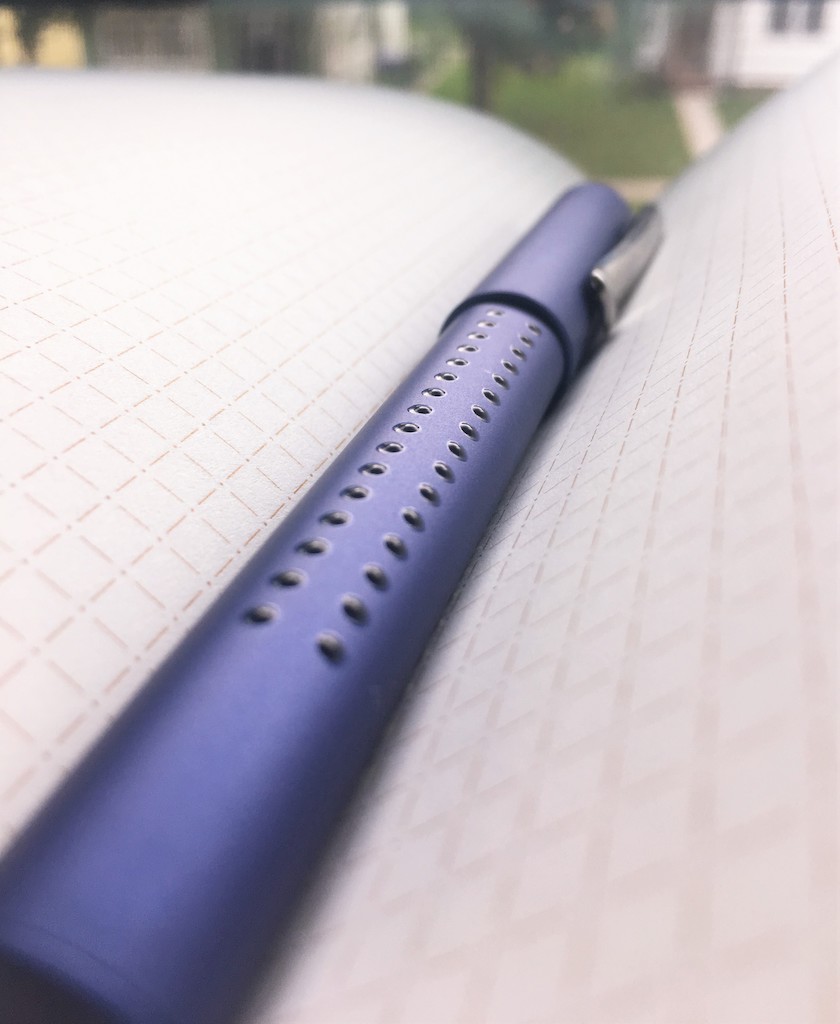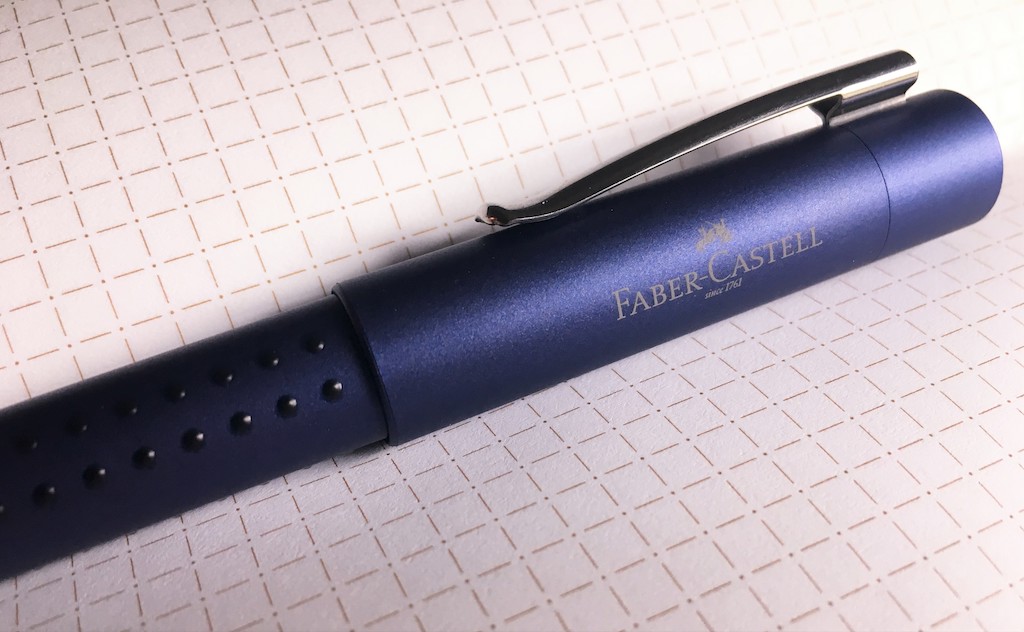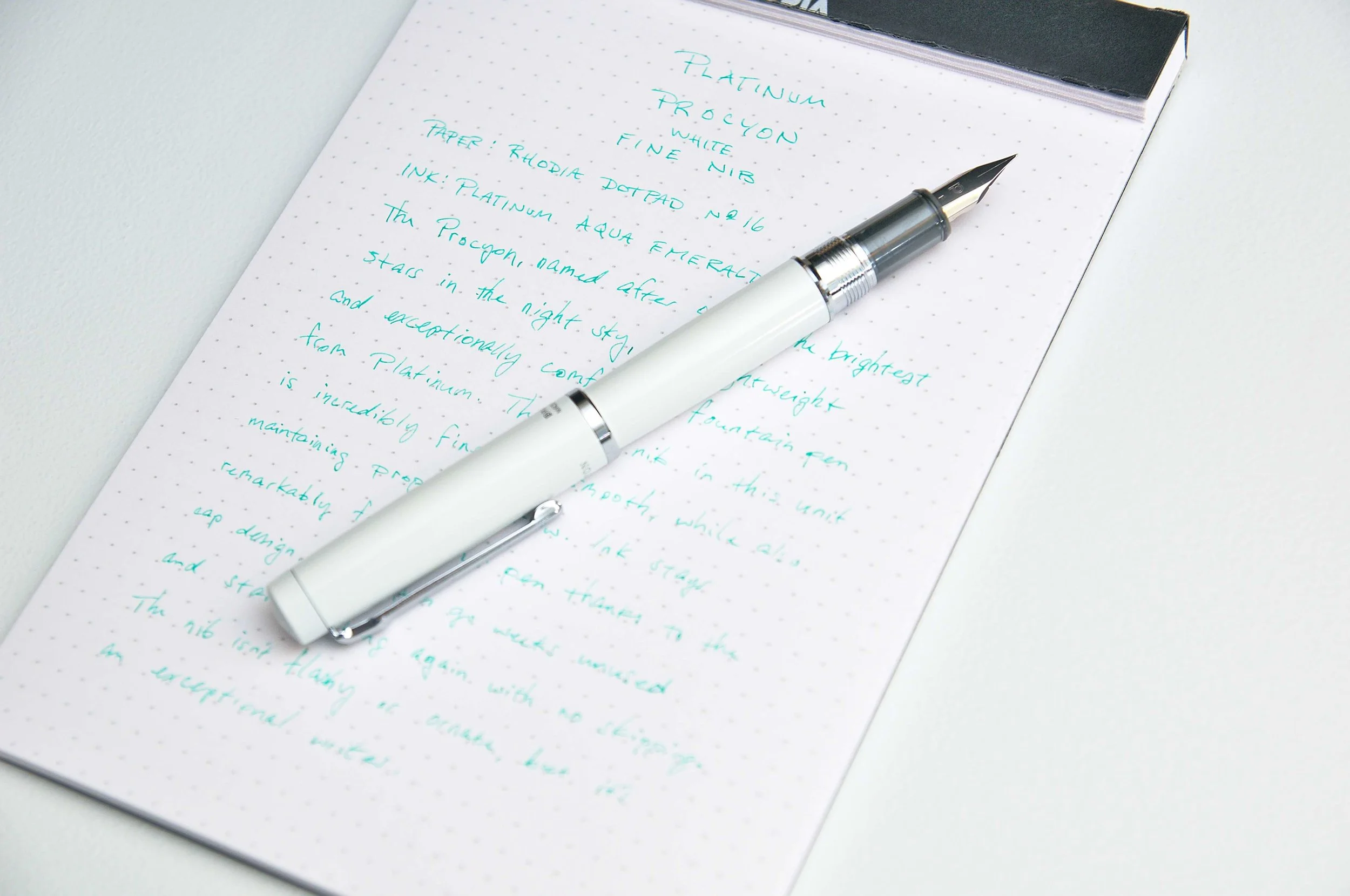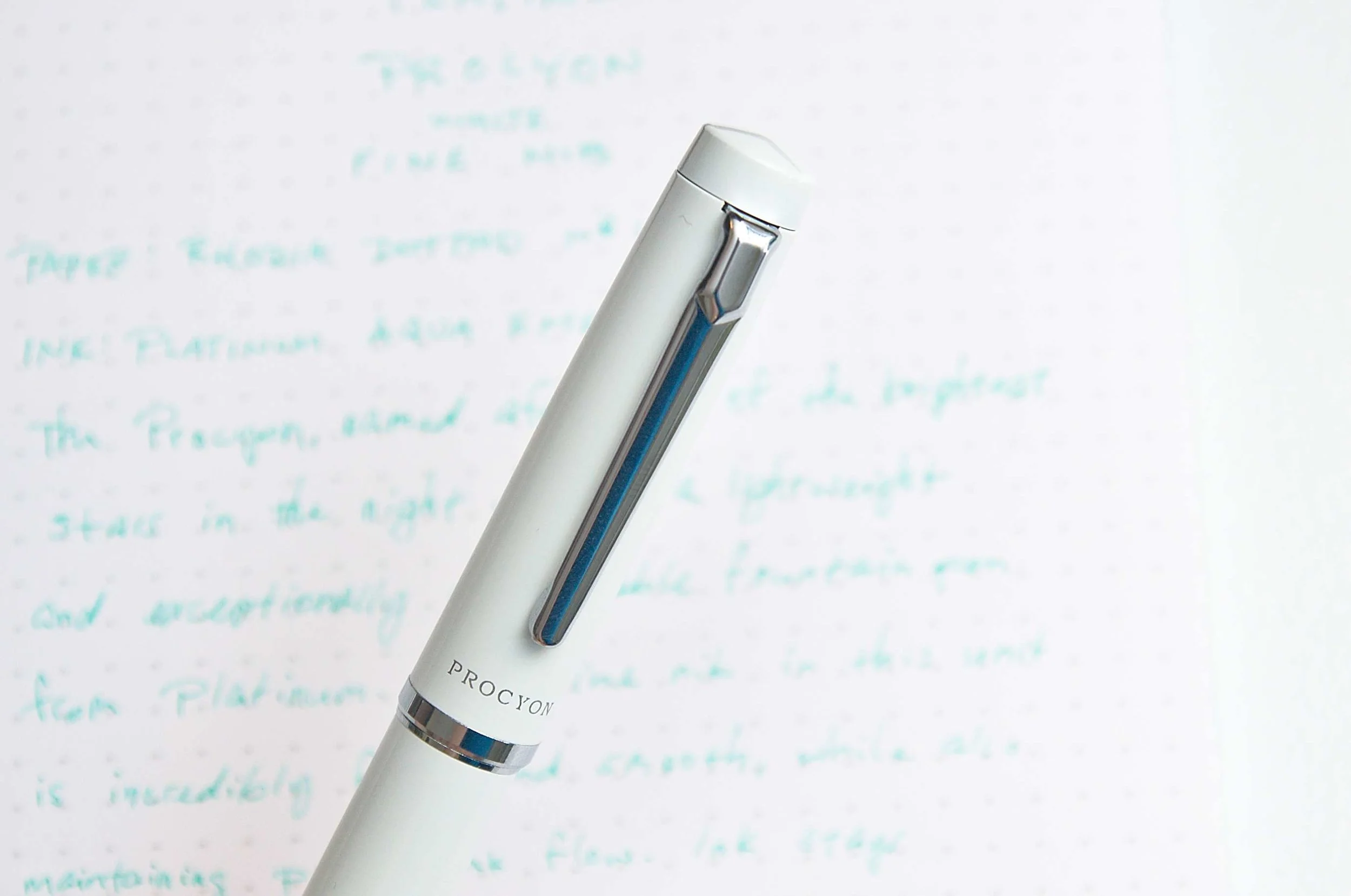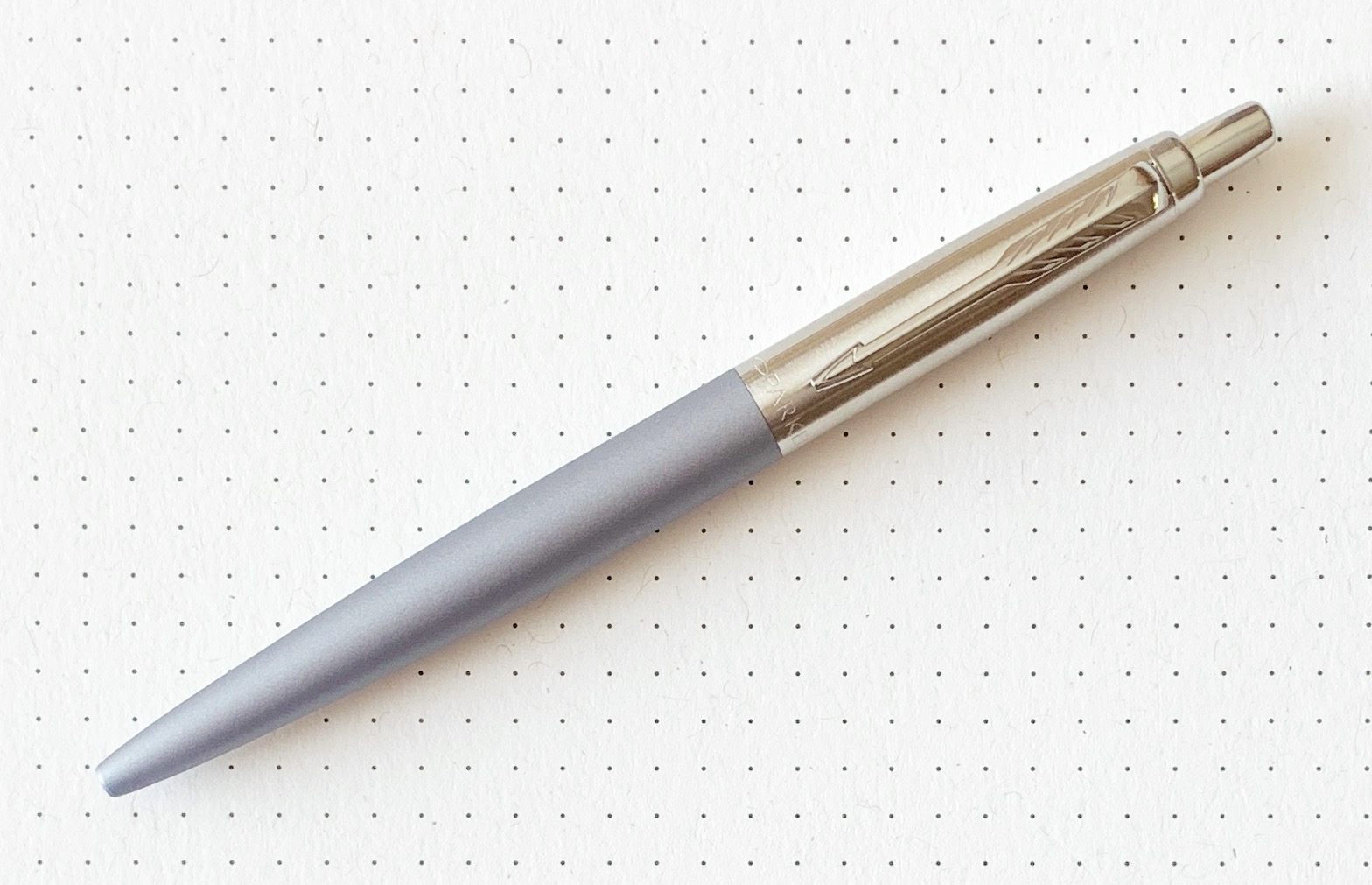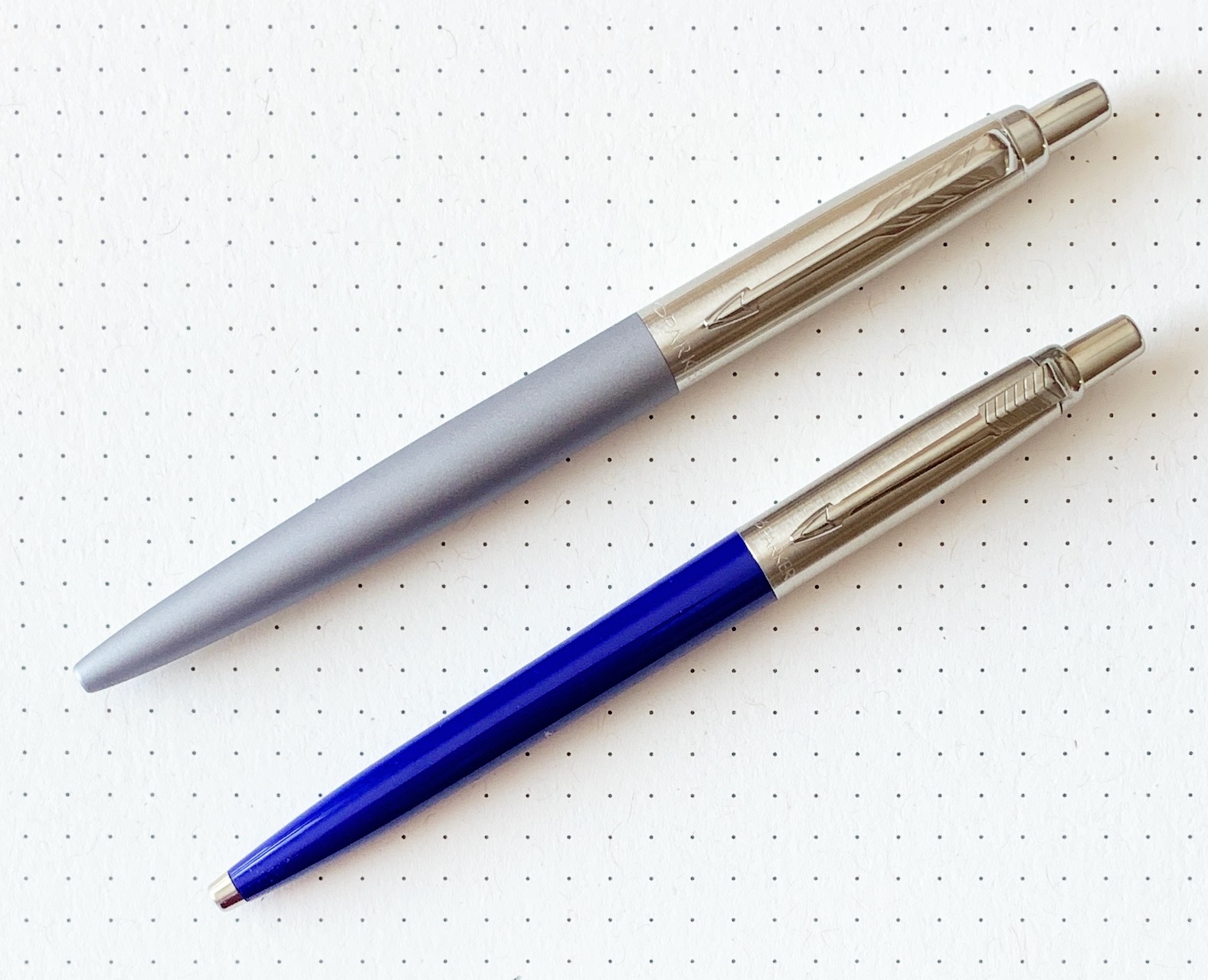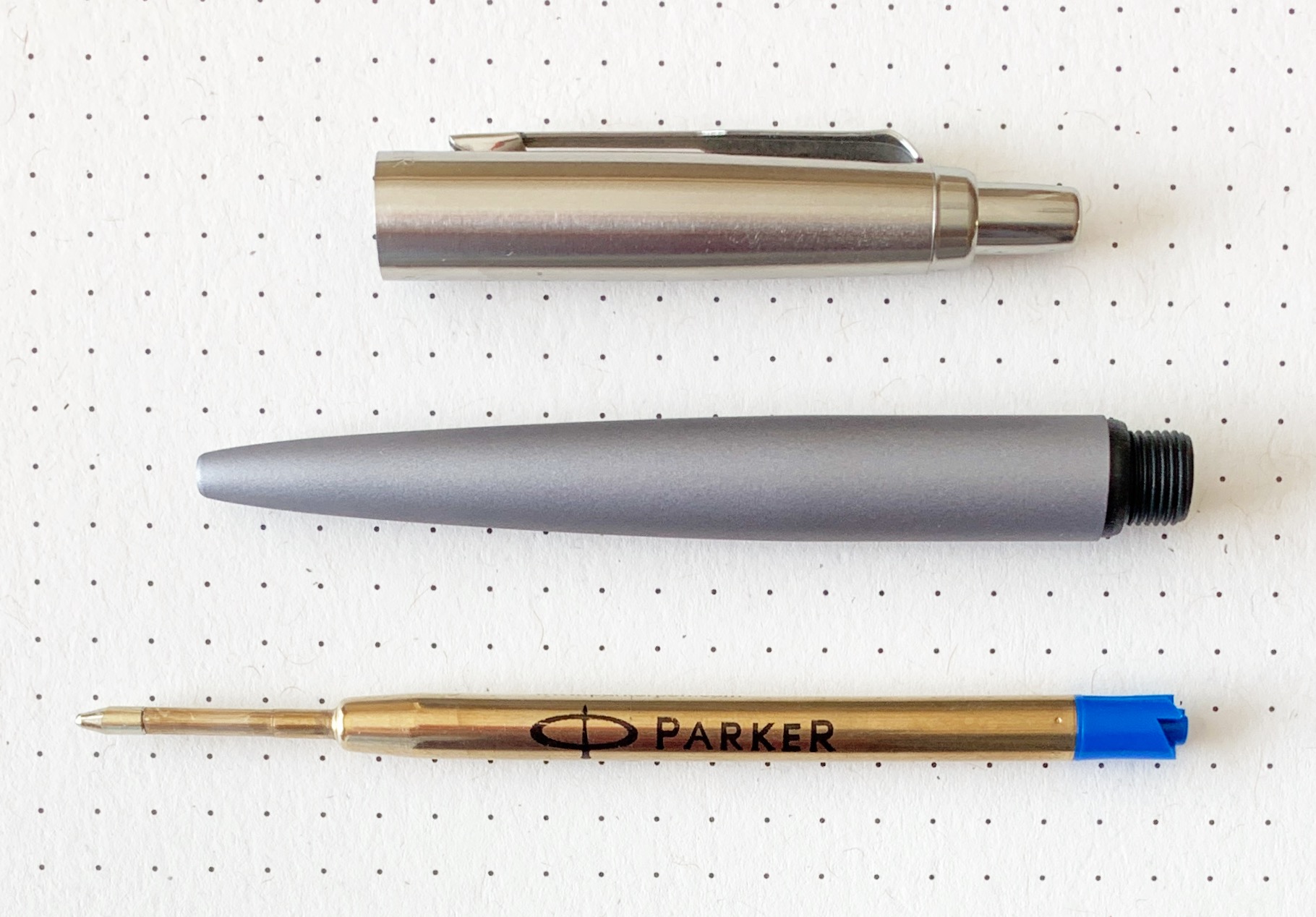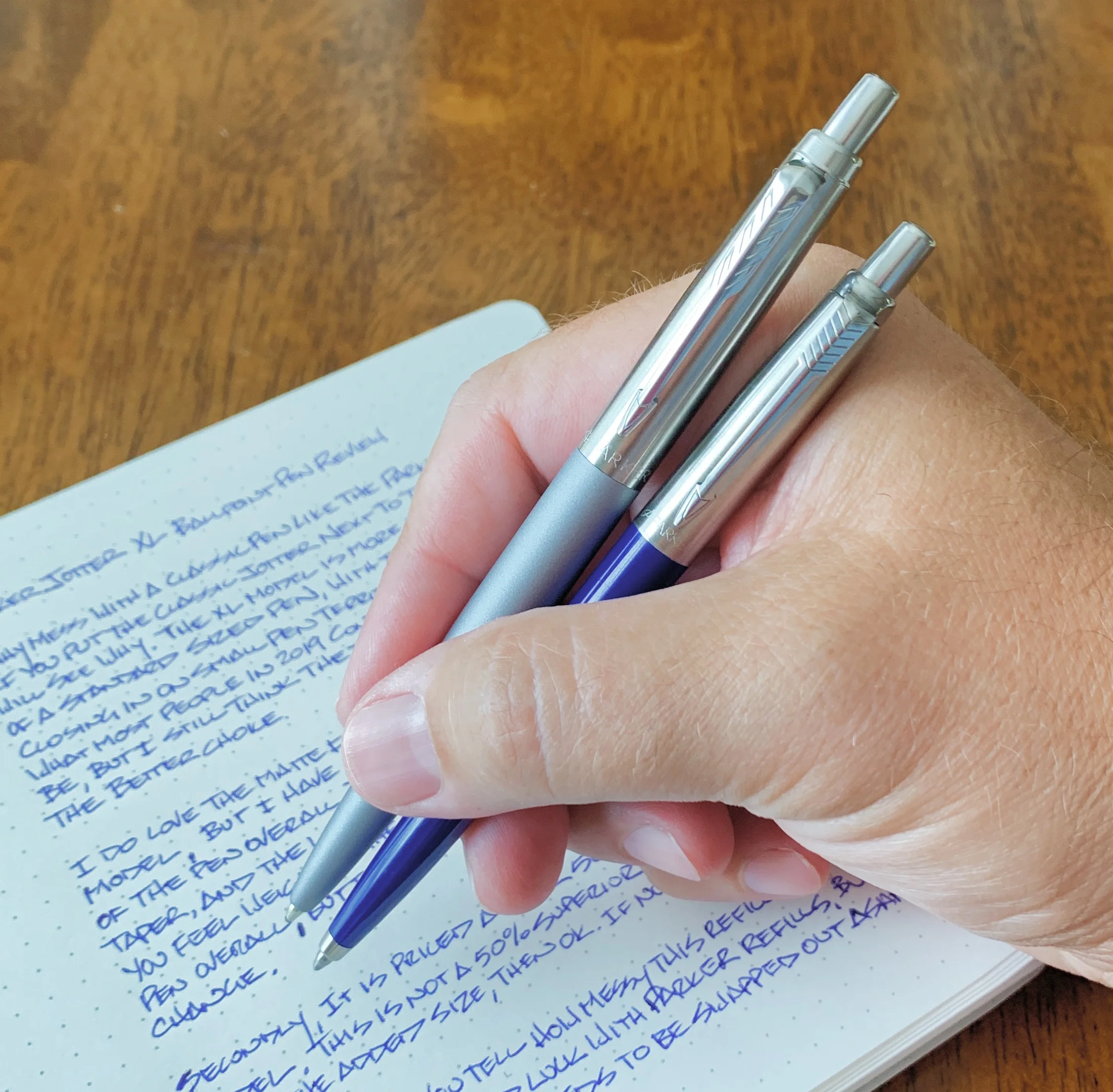(Sarah Read is an author, editor, yarn artist, and pen/paper/ink addict. You can find more about her at her website and on Twitter. And check out her first novel, The Bone Weaver’s Orchard, now available where books are sold!)
There can never be too many entry-level fountain pens. The more variety there is, the more likely new hobbyists will find a pen they love and join us at the Pen Addict table. Faber-Castell's Grip fountain pen has flown under my radar, but it's an excellent contender for a beginner fountain pen--and it's a decent pen even for us wizened collectors.
If this pen hadn't arrived in a fancy presentation box, I'd have assumed it was a generic rollerball from a big box store. I think the grip dots create this impression for me. They remind me of school pens. And this would actually make an excellent school pen! But it certainly isn't putting on any airs when it comes to appearance. The only ornament is the raised logo on the top of the cap and the lovely engraved nib. Otherwise, this is a very plain pen. Or maybe a better word would be 'inconspicuous.'
The body is molded plastic; this one is a pretty dark blue with black raised dots along the body. These are supposed to aid in gripping the pen, though they are conspicuously absent on the grip section itself. The grip section is textured soft plastic. The whole body is very subtly triangular shaped, so the pen doesn't roll too easily, and the grip is comfortable. The shaping guides your grip without forcing you into a specific pen hold.
The cap has the Faber-Castell name on it in white. It snaps to close and posts securely. It's very light even when posted, which makes it great for long writing sessions. The clip is folded stainless steel and works very well. It's springy but still secure, and the shaped tip doesn't damage paper or fabric.
The pen takes standard cartridges (long or short will work) or a standard converter. It comes with one cartridge.
The nib is steel and nicely decorated. This one is an extra fine and it is actually very fine. Other Faber-Castell nibs I've used have felt on the broader side to me, so I was surprised to get such hairline writing with this one. It does have a lot of feedback and feels a bit dry, but it isn't unpleasant at all. In fact, I think that makes it perfect for writing in pocket notebooks, or on office or school paper.
This is an excellent student pen, or work pen--or a pen that you want to carry around without worrying about it too much. It's reliable, writes well, and it's inexpensive. At $20, I think it's the perfect price for gifting to kids or office friends who might be fountain pen curious. It's been my work companion for a few weeks, now, and its plain appearance means I can leave it sitting on the desk while I wander away to work without worrying about it growing legs and walking away. No one looks twice at it, until I explain what makes it special.
(Vanness Pens provided this product at no charge to The Pen Addict for review purposes.)

